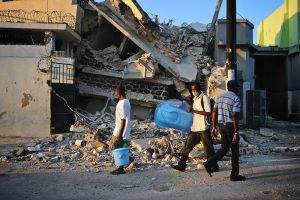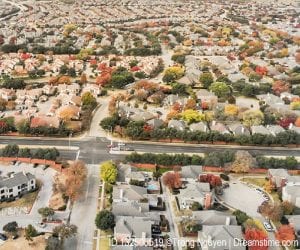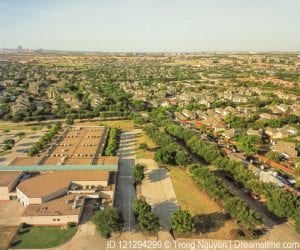Every summer Population Education is fortunate to host interns from around the U.S. These students bring their talents and passions to the PopEd program by completing a wide variety of projects. The following blog was written by one of PopEd’s 2024 summer interns.
Today, about half of the world’s population – 4.4 billion people – lives in cities. By 2045, that number will increase to 6 billion. Urban expansion has become the reality of many countries, as the physical expansion of cities and migration to metropolitan areas increases annually. With proper planning and supervision, urbanization can bring economic and social growth to cities. It can be a transformative tool to help reduce poverty, increase employment opportunities, and augment accessibility to education and health services.
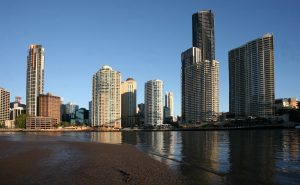
Benefits Of Urbanization
Urbanization also has many environmental benefits. Urbanization helps decrease carbon emissions per person due to public transportation. Upzoning, a process that allows for taller and denser development, can also decrease the number of impervious surfaces and reduce urbanization’s impact on wildlife.
Environmental Consequences of Urbanization
Unfortunately, poor executions of urbanization have placed a burden on the environments of global communities, stunting urban and social development. The uncontrolled growth of cities is currently associated with high levels of inequality and irreversible environmental damage. Here are five significant environmental issues caused by urbanization.
5 Environmental Issues Caused by Urbanization:
1. Urbanization and Water Pollution
Water pollution is a danger to human health – humans can consume pathogens from oil, microplastics, human excretion, and fertilizer found in improperly disposed of urban waste. Microplastics can now be found in 93 percent of urban rivers worldwide. Contaminated water exposes citizens to numerous health risks.
How Does Urbanization Cause Water Pollution
Roads and concrete sidewalks greatly disrupt natural water cycles. Rather than being absorbed, rainwater travels on hard surfaces and carries pollutants into urban waterways. Improper waste disposal and untreated sewage contaminates urban water bodies, reducing the supply of fresh water to metropolitan populations.
2. Air Pollution due to Urbanization
In urban areas, energy consumption is significantly higher because cities require a constant supply of energy. Cities use 75 percent of global energy, the UN reports, and emit between 50 and 60 percent of the world’s total greenhouse gases.
How Does Urbanization Cause Air Pollution?
Motor cars, engines and the construction industry in cities release pollutants into the air, which has resulted in air quality levels higher than the World Health Organization’s guidelines. Urban air pollution affects the health of 2.5 billion people globally, leading to the premature deaths of residents from respiratory and cardiovascular problems.
3. Greenspace Loss
Approximately 6,000 acres of natural land are converted daily. The expansion of cities continues to decrease greenspaces previously surrounding urban areas, which disturbs ecosystem services and threatens biodiversity. Animal populations become isolated, dispersed and experience local extinction due to this habitat fragmentation and loss. Their migration, feeding patterns, reproductive success and safety from predation are at risk. Various plant species struggle to survive, homogenizing the environment and reducing pollinators’ accessibility. 34 percent of plants and 40 percent of animals are currently at risk of extinction in the U.S., much due to urbanization.
4. The Urban Heat Island Effect
The overconsumption of energy in cities has contributed to the urban heat island effect. Cities absorb the heat in impervious roads and sidewalks, which increases local temperatures; the temperature in urban areas is higher, by 2 – 5°C (35.6 – 41°F), than nearby rural areas. The urban heat island effect also impacts the weather in metropolitan areas, changing precipitation patterns, increasing the occurrence of heat waves, and altering biogeochemical processes that naturally occur. New York City greatly suffers from the urban heat island effect during the summer. Each decade, the average annual temperature of New York City has increased by 0.3 °F and is projected to increase by up to 8.8 °F in the next 40 years.
5. Natural Disasters
As natural landscapes are replaced with paved sidewalks, the soil and sediment of these areas are disturbed. Disturbed soil and sediment can lead to erosion and other natural disasters, such as earthquakes, landslides, and sinkholes. Poorly planned urbanization can increase the associated damage of these natural disasters. Haiti, for example, experienced its worst earthquake in 2010, which killed 222,570 Haitians and displaced 1.3 million. The damage of the disaster was further emphasized by poor urban planning and inadequately built housing, which left Haitian cities, particularly Port-Au-Prince vulnerable. Port-Au-Prince is currently the 8th most densely populated city in the world. Stable infrastructure, reliable administration, building regulations and urban planning are needed to avoid repeating the immense losses of 2010 in future earthquakes that may occur.
Urban Growth Must Be Planned
Urbanization has greatly benefited society. The growth of cities has led to an increase in diversity and economic opportunities. Practices like upzoning can lower carbon footprints in certain areas. While urbanization can be an uplifting tool, the lack of planning emphasizes many of the preexisting social, economic and environmental issues in cities. From the increase of dangerous weather to the damage to human health at the hands of pollution, urbanization has significantly harmed the environment in irreversible ways. As humans continue to evolve and the world’s urban population continues to grow, analyzing citizen-environmental interactions will help preserve the environment and fully reap the benefits of urbanization.
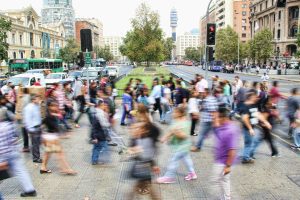
Here is a list of five NGOs that are dedicated to improving urban planning and helping communities develop in the face of issues caused by urbanization:
UN Habitat
American Planning Association
The Urban Institute
Population Council
World Resources Institute for Sustainable Cities
Image credits: Brisbane skyline (kangaroo point (10) by bertknot is licensed under CC BY-SA 2.0); Destruction in Port-au-Prince (haiti_postearthquake07 by Colin Crowley is licensed under CC BY 2.0); Pedestrians in Santiago (Photo by mauro mora on Unsplash)



